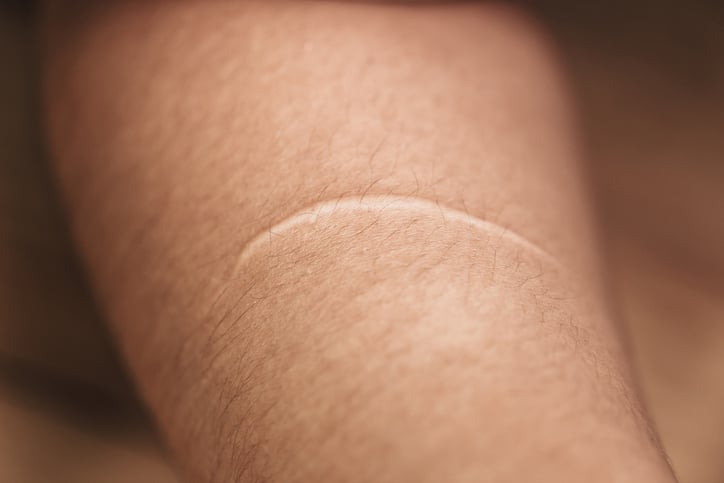
Scars are a natural part of the healing process – a defense mechanism set in motion by your body to protect itself from wounds. Essentially, natural collagen generates new skin; however, that new skin is often a different color and texture – usually starting off red or pink and fading to white over the years.
Let’s go over some myths and facts about scars as well as some solutions.
Scar Treatment Myths: Getting the Story Straight
- Myth: Getting a tan will help your scar blend in better.
- Fact: UV rays actually trigger hyperpigmentation in the skin, which makes it even more visible in contrast with the rest of your skin.
- Solution: Apply a sunscreen of SPF 30 or higher to protect your scar and keep it from standing out more.
- Myth: It’s OK to use hydrogen peroxide on new skin while it forms.
- Fact: Hydrogen peroxide actually destroys new skin cells and delays the healing process.
- Solution: Simply clean the affected area with plain soap and water.
- Myth: Vitamin E is the go-to lotion for damaged skin.
- Fact: Studies show Vitamin E can actually delay the healing process. Many people also have an allergy to it.
- Solution: Use topical scar treatments that contain Vitamin C, which is a highly healing antioxidant.
- Myth: Let the healing wound dry out.
- Fact: Dry skin does not heal as readily as moist skin does.
- Solution: Keep the wound covered in the early stages, applying antibiotic or silicone gel cream. Drink plenty of water to keep hydrated.
- Myth: Scars eventually turn lighter and fade with time.
- Fact: Not always. Keloid scars, hypertrophic scars and infected wounds don’t fade without special treatment.
- Solution: If you have an itchy, raised or red scar, see a dermatologist. Use silicone scar gel treatments on keloid and hypertrophic scars, as they have been proven to reduce the appearance of scars.
Wound Care Tips
Properly caring for a wound right when it happens is key to reducing the chances of scarring. Heed these tips when you get a cut or other injury.
- Carefully clean and disinfect the wound. Go to the ER or see a doctor if the wound is very deep and won’t stop bleeding.
- Keep the wound covered with bandages, and apply antibiotic ointment to prevent infection and drying.
- Leave the wound alone and don’t pick at the scab.
- Apply regular pressure to prevent the buildup of collagen as well as inflammation.
- Once the wound has healed, apply silicone gel to the area to keep it moist and prevent a scar from forming.
- As new skin forms, massage the area every day.
It’s wise to keep a tube of Scarfade in your medicine cabinet in case of injury. Call to order now at 1-800-771-2215.
